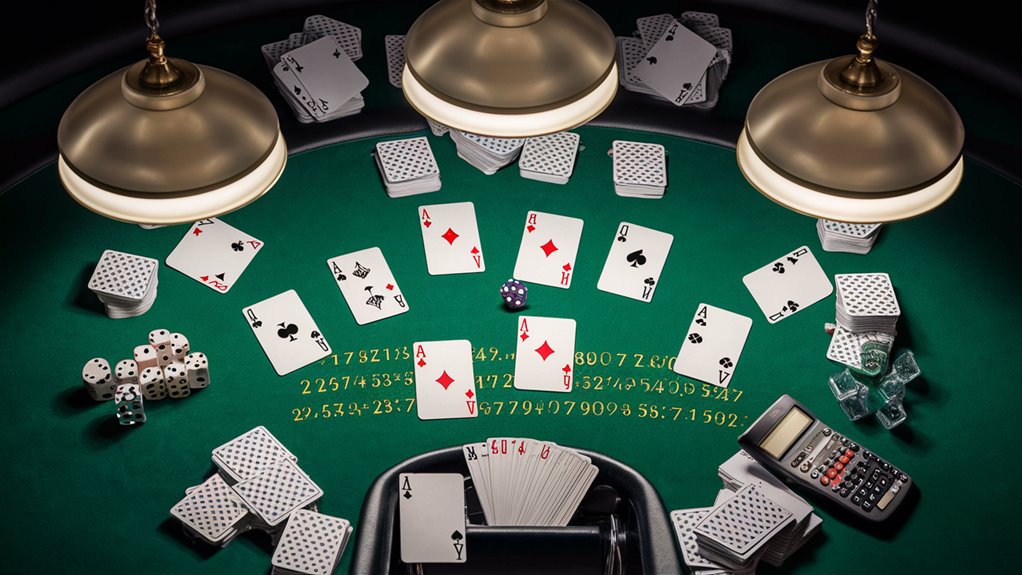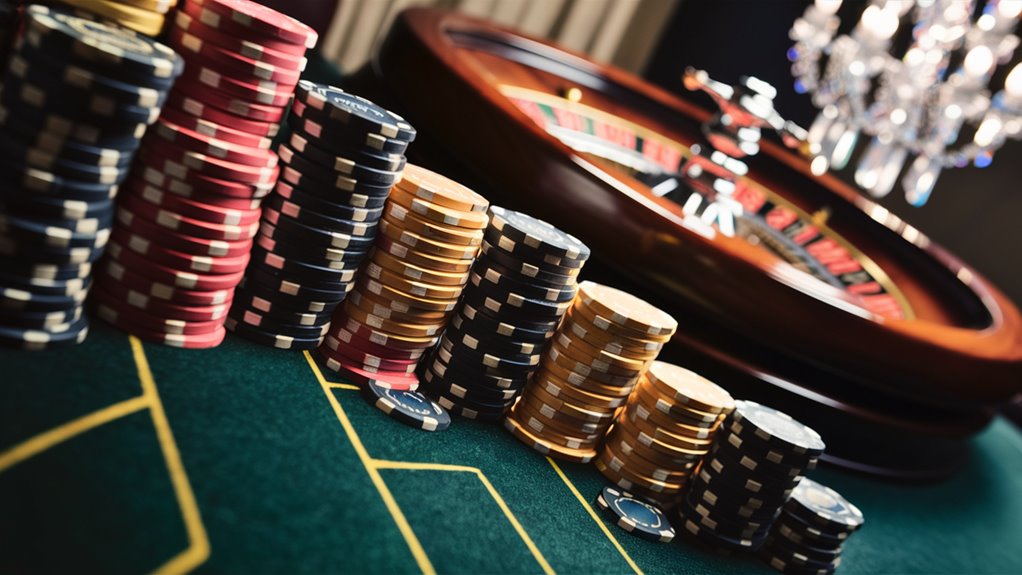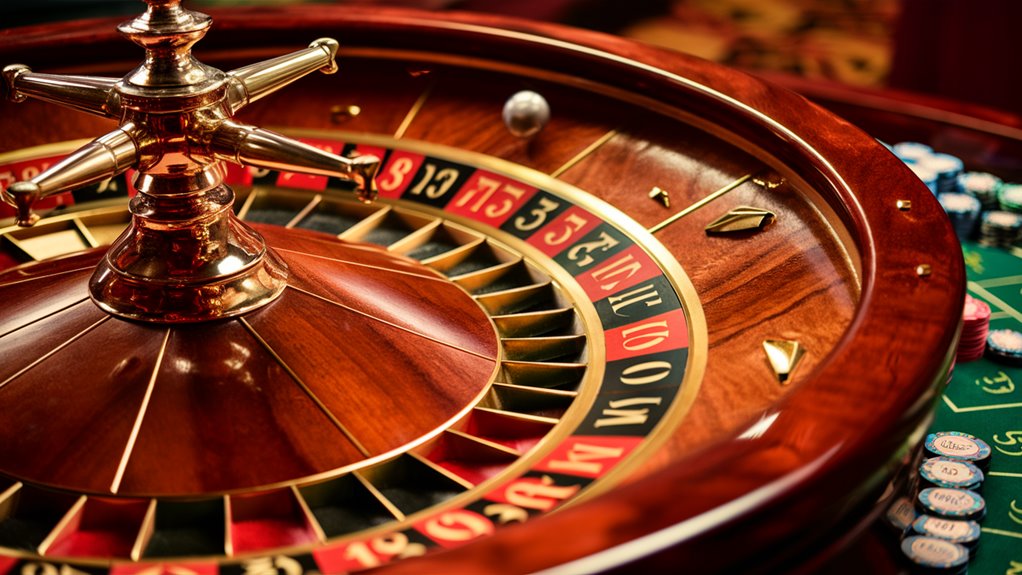What’s the Real Deal with Betting Odds: Can We Trust Them?

Casino odds are set by deep math to ensure the house wins more using math edges. Each game holds a special house edge, different for each one 여기서 안전성 확인하기
Understanding House Edge Percentages
- Blackjack: 0.5% if you play it right
- Baccarat: 1.06% on banker bets
- Slot machines: Up to 15% or even higher
- Roulette: 2.7% (European) to 5.26% (American)
Simple Math in Casino Games
The core of betting odds lies in deep luck math and clever rules. Casinos use random number generators (RNGs) to keep the game unsure, but aid the house win after a while.
Impact on Players
Games like baccarat and blackjack, thought to be fair, use clever math against you as your play goes on. The house edge takes more cash the longer you play, even if you win big sometimes. Knowing these luck rules helps explain why casinos stay rich while still offering fun to players.
The Math Behind the House Edge
The house edge is how betting places keep a winning hand by setting odds and payouts with care. A clear example is American roulette. Its 38 slots show why: though straight-up bets pay 35:1, the real odds of winning are 37:1, creating a 5.26% house edge.
House Edge in Various Games
- Blackjack: 2% house edge, can be less than 1% with smart play
- Craps: The pass line bet has a 1.41% house edge
- Slot machines: Edge between 2% to 15%
These rates are from deep math that studies each move and its odds.
Effects of Long-Term Math
The house edge idea works better the more you play. Though you might win now and then, the casino’s math edge becomes clear the more you play. This math fact makes it tough for players to win a lot over time, as the house edge piles up with each bet.
Famous Casino Games and Their Odds
Two Casinos: I Know the Game Odds and House Edge
Best Games in the Casino
Blackjack is a top choice with a low house edge of 0.5% when you follow basic tips. Baccarat also has good odds, with a 1.06% edge on banker bets and a 1.24% edge on player bets, great for planned out plays.
Odds for Slot Machines and Roulette
Slot machines have a high house edge, mostly between 2% to 15%. The real payback to players can vary. Roulette types have different edges: European roulette has a 2.7% edge, while American roulette has a bigger 5.26% edge due to an extra double zero.
Games of Strategy and Smart Moves
Craps offers fair chances with a 1.41% edge on the pass line bet, but other bets can have more than a 16% edge. Video poker, like Jacks or Better, can have an edge under 0.5% if played right, showing why understanding math is key in choosing casino games Gambling More Transparent
How Random Number Generators Work
Complete Guide to Random Number Generators (RNGs)

Exploring RNG Tech in Games
Random Number Generators (RNGs) are vital in modern casino games, using tough math to offer really unsure results. These clever setups run games on land and online, making play fair and open.
How RNGs Function and Assist
Math laws set up RNG systems, making many numbers quickly. When you play, like on slot machines or online poker, the RNGs figure out millions of number combos in a second. These numbers decide game results from where reels stop to which cards show up.
Keeping Games Safe and Just
Starting numbers and strict math laws create lines that can’t be guessed or changed. Modern RNGs pass tough tests and gain praise from outside places. These digital tools mimic the randomness of traditional game pieces like actual dice or card shuffles while giving fast results needed for today’s games.
Main Tech Features:
- Quick processing power
- Best ways to keep data safe
- Standards from external sources
- Rapid outcomes as you play
- Tough to crack
Luck in Card Games
Complete Guide to Card Game Luck
Math in Card Game Luck
Traditional card game luck relies on set math laws that players can count on well. Random number generation (RNG) might run digital games, but real card play sticks to proven math methods.
Basic Card Luck Math
In a normal 52-card set, luck math begins by calculating all possible outcomes against those you seek. The odds of drawing a specific card are 1/52, while drawing any card of one type (like any ace) is 4/52 (seen as 1/13).
Advanced Luck Math
Varying Card Combos
Hand math needs you to know about combos and orders. For poker hands, the odds of drawing a pair are worked out like this: (4C2 × 13) / (52C2) = 0.0594 or 5.94%
Depends on Previous Cards
One card after another means you need to adjust the odds with each draw. Drawing two aces in a row illustrates this:
- Odds of the first ace: 4/52
- Odds of the second ace: 3/51
Actual Plays in Well-Known Card Games
- Poker hand odds
- Blackjack card counting
- Bridge bidding strategies
These math foundations help players make choices using facts over mere guesses.
Understanding Payback Percentages
Learn Casino Payback Percentages
Math Behind Gambling Returns
Payback percentages are the core math aspect of gambling odds, showing the average pay players get from bets over time. Each casino game has its rate, calculated by dividing what players get by all money bet and multiplied by 100.
Explaining RTP Math
Consider a slot machine with a 95% payback rate: For every $100 bet, the game intends to return $95 to players over many rounds. The remaining $5 shows the house edge, keeping the casino’s cash flow and helping it stay running.
Real Uses and Changes
Theory vs. Reality
Payback percentages are estimates based on many rounds of play. Short-term results can differ greatly from what’s planned. In video poker, reaching the stated payback requires perfect moves.
What Shifts Return Rates
- Choosing game types
- How much you bet
- How long you play
- Smart playing
- How well players perform
Knowing these key payout rules lets players make wise betting choices and hold true expectations about possible paybacks. Understanding the link between theoretical payback and actual returns is crucial for smart gaming practices.


